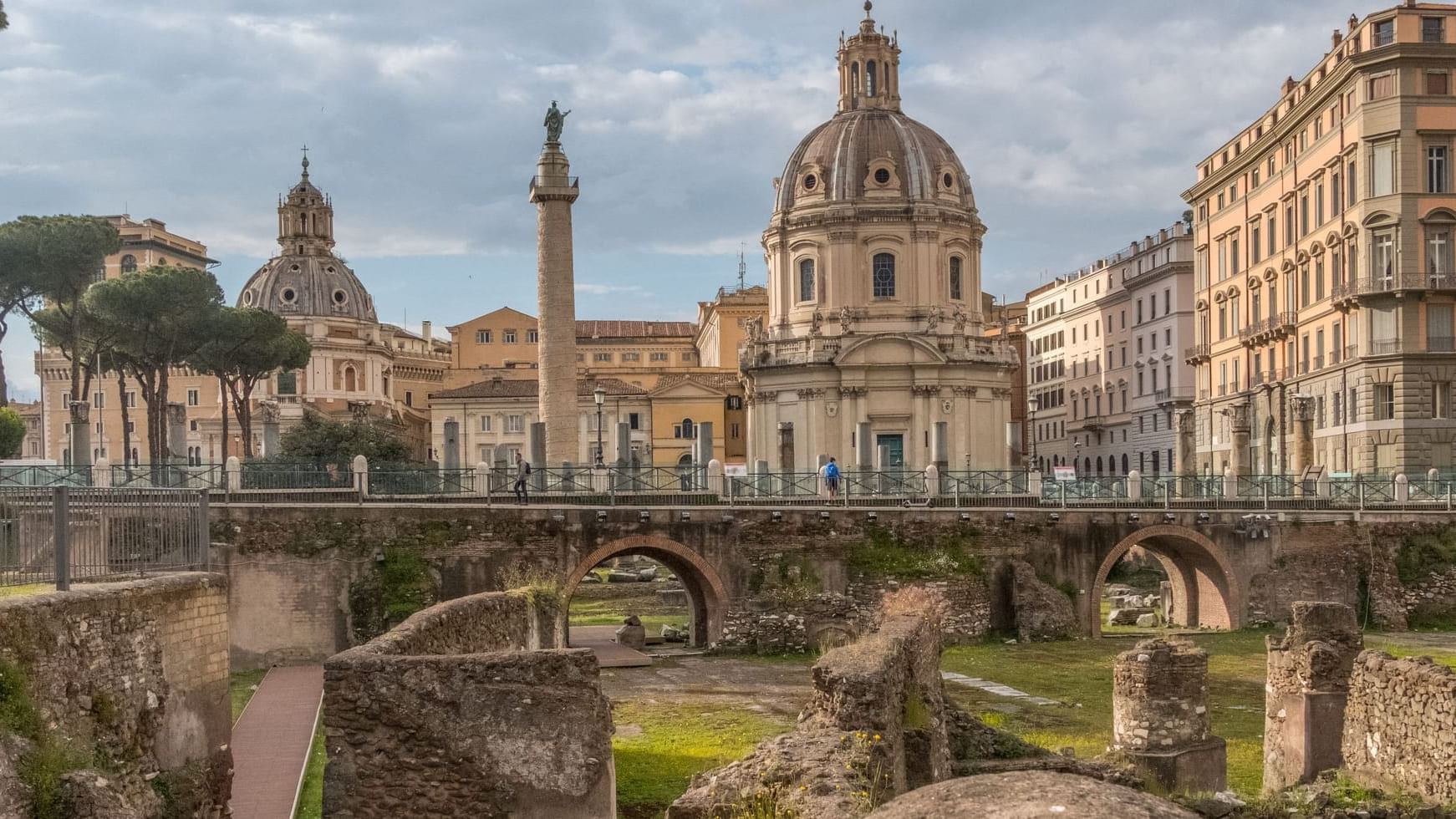The ancient splendours hidden underground, between charm and mystery
6 Feb 2024
Exploring Italy's underground cities allows you to delve into mysterious places usually hidden from the human eye and, therefore, imbued with an undeniable charm.
Buried treasures, ancient pathways, and traces of ancient civilizations wind through the subsoil beneath the hustle and bustle of the city, carrying the remnants of a long-lost past. While life rushes frenetically by on the surface, everything remains still, silent, and crystallised in time below, ready to be admired by the curious.
Let's reveal the hidden face of three Italian cities that conceal marvellous underground neighbourhoods: the Catacombs of Rome, Subterranean Naples, and ancient Perugia.
Walking through history in Perugia
Perugia has a history dating back millennia. Refounded by the Etruscans on a pre-existing Umbrian settlement, it hides beneath the surface a veritable "submerged" city.

To access subterranean Perugia, one must traverse the monumental complex of the Isola di San Lorenzo, which also houses the Capitulum Museum and the Cathedral of San Lorenzo. No starting point could be more apt than the acropolis of the ancient city, which once housed the sacred area.
Around the hill on which the acropolis stands, the decumanus is still visible today: indeed, the Roman-era paving is visible, with characteristic wheel marks of carts testifying to its central role in ancient transportation.
Not far away are the remains of a domus built around 70 B.C., displaying traces of the fire in 40 B.C. that changed the city's history during its transition from the Etruscans to the Romans under the command of Octavian.
Perugia is a city with timeless charm, and to explore it thoroughly, the ideal choice is to stay at Posta Donini 1579 | UNA Esperienze, an elegant structure immersed in Italy's green lung. Housed in a 16th-century villa, the hotel offers 48 rooms with canopy beds, frescoes, and views of a botanical park.
Rome and its catacombs
The Capital also has a very ancient underground soul: beneath the most famous monuments of the Eternal City - the Colosseum, the Trevi Fountain, and the Pantheon, to name a few - lies a dense network of galleries, crypts, cubicles, and loculi.
Rome's catacombs number is more than 50, extending over 150 km, touching various areas of the city: from via Appia to via Flaminia, passing through via Tiburtina, via Nomentana, and many others.

An interesting aspect to highlight is that the catacombs were created by two different religious communities: the Jewishand the Christian communities.
Among the catacombs attributed to Christians, under the Pontifical Commission for Sacred Archaeology, the Catacombs of San Callisto are particularly famous, and can be accessed from the Appian Way. Originating around the mid-2nd century, they are part of a burial complex of about 15 hectares, extending to 20 km in length.
These catacombs include the tombs of several popes and the Crypt of the Popes, also known as the Little Vatican.
If you want to enter underground Rome and spend a few days in the city, we recommend staying at UNAHOTELS Decò Roma. The property boasts a prestigious location, a short distance from Piazza della Repubblica and Termini Station: from here you can explore the city, its wonders and its secrets.
Subterranean Naples
Subterranean Naples is one of the most famous hidden networks in Italy, as well as one of the city's most mysterious attractions. The substrate that has supported the city for five millennia conceals a large network of tunnels, aqueducts, galleries and spaces of ancient origin.

To access the architectural wonders, there is an official and authorised route that starts from Piazza San Gaetano 68, in the historic centre of Naples. Excursions are available every day from 10 am to 6 pm.
The tour lasts approximately 60-90 minutes and will allow you to experience the oldest side of Naples; in addition, you will visit the remains of the Greco-Roman Theatre and enter a typical Neapolitan apartment of the time.
But there is also room for more recent history concerning, in particular, World War II. During the conflict, in fact, this space was used to allow people to shelter from the bombings: it is estimated that about 40,000 people found refuge here.
Subterranean Naples hides many other secrets. Worth a visit is the Tufello Wine Route, which leads to the discovery of a particular and unique wine preserved in the tufa cavities along the way.
The Path of the Underground Gardens, on the other hand, allows you to discover a real garden 35 metres deep. Born on the occasion of Expo 2015, it consists of plants living protected from smog, fine dust, and acid rain. An authentic case history that still attracts researchers from around the world.
If you are planning to spend a few days in the city, UNAHOTELS Napoli is the hotel for you: this elegant 4-star building, only 800 metres from the Central Station, allows you to easily reach the historic centre.
Underground cities hide the most intimate soul of our cities, giving visitors the unparalleled experience of discovering the charm and mystery of hidden Italy.

